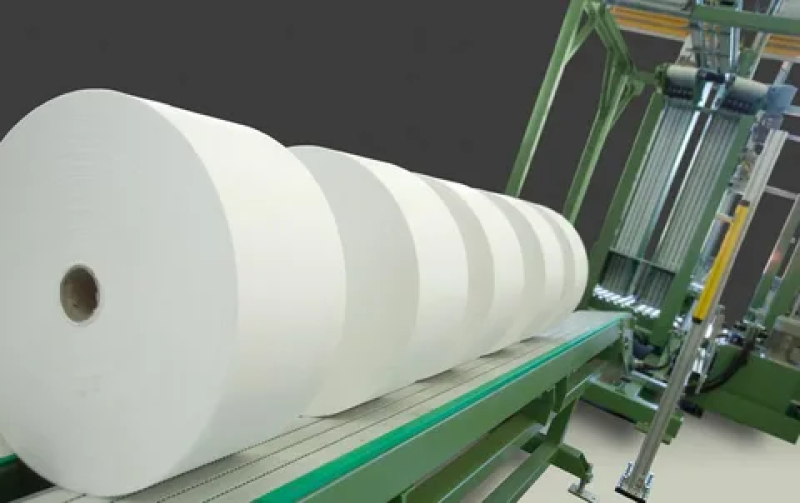Airlaid nonwovens, a rapidly evolving segment within the nonwoven fabrics industry, have gained significant traction due to their unique properties and versatile applications. These materials are produced by dispersing cellulose fibers into an air stream, creating a loose web that is subsequently bonded using chemical or thermal binders. The resulting fabric exhibits a high bulk, softness, and absorbency, making airlaid nonwovens increasingly preferred across various sectors including hygiene, packaging, and industrial uses.
Superior Characteristics Driving Airlaid Nonwoven Adoption
One of the primary reasons for the widespread adoption of Airlaid Nonwovens is their exceptional versatility and functionality. Unlike traditional wet-laid or spunbond nonwovens, airlaid fabrics offer superior softness and bulk, combined with high absorbency levels. This makes them particularly suitable for hygienic products such as baby diapers, adult incontinence pads, feminine hygiene items, and medical wound dressings. The increased bulkiness and softness do not compromise the material’s strength, as airlaid nonwovens maintain structural integrity under pressure and moisture exposure.
In addition to absorbency, airlaid nonwovens provide excellent air permeability, which is essential in applications like filtration and protective apparel. Their lightweight nature further enhances user comfort without sacrificing performance. The customization options available through variations in bonding methods, fiber blends, and basis weights allow manufacturers to tailor products to specific application requirements, enhancing the commercial appeal of airlaid nonwovens in diverse market niches.
Diverse Industrial and Consumer Applications Expanding Demand
The multifaceted utility of airlaid nonwovens has propelled their integration into numerous consumer and industrial products. In the hygiene sector, these nonwovens serve as the core absorbent layer in a variety of disposable products, delivering improved moisture management and user comfort. Packaging industries leverage airlaid nonwovens for producing cushioning materials and protective wraps, capitalizing on the material’s shock-absorbing capacity and biodegradability when formulated with cellulose fibers.
Moreover, airlaid nonwovens are increasingly making inroads into automotive and household applications. For instance, insulation and soundproofing components in vehicles utilize airlaid fabrics due to their lightweight and acoustic dampening properties. Household cleaning wipes and kitchen towels benefit from the absorbent nature of airlaid nonwovens, offering superior liquid uptake and durability during use. This broad spectrum of applications underscores the dynamic potential of airlaid nonwovens to align with evolving consumer demands and environmental sustainability trends.
Advanced Manufacturing Innovations Enhancing Product Efficiency
The production of airlaid nonwovens is witnessing continuous technological advancements aimed at improving product consistency, performance characteristics, and production efficiency. Innovations in fiber blending techniques allow for optimized fiber orientation and distribution within the web, which enhances bonding strength and functional properties. Additionally, the integration of natural fibers alongside synthetic binders is facilitating the development of eco-friendly airlaid nonwovens with reduced environmental footprints.
Automation and real-time monitoring systems incorporated into production lines contribute to heightened quality control and reduced waste generation. These advancements not only streamline manufacturing processes but also enable rapid adjustments to meet specific product demands. Enhanced bonding technologies such as ultrasonic or advanced hotmelt adhesives are being employed to further improve the tactile feel and durability of airlaid nonwovens. These manufacturing trends are critical for companies seeking competitive differentiation through innovation in nonwoven material science.
Exploring Comprehensive Industry Reports on Airlaid Nonwoven Dynamics
For businesses and stakeholders looking to navigate market opportunities in the airlaid nonwovens segment, authoritative industry reports offer detailed insights into competitive landscapes, emerging applications, and growth projections. These reports provide a data-driven perspective on market trends, enabling informed decision-making processes regarding product development, market entry strategies, and investment planning.
Accessing reliable market intelligence ensures awareness of key manufacturers, supply chain dynamics, and regulatory impacts relevant to airlaid nonwovens. Advanced reports often include segmentation analysis by region, application area, and raw material preferences, offering a holistic view of the sector’s evolution. Furthermore, comprehensive market analyses highlight technological disruptions, consumer behavior shifts, and sustainability initiatives that collectively shape the future trajectory of airlaid nonwovens globally. Such navigational resources are invaluable for strategic planning in competitive industrial environments.
Purchasing Strategies and Market Opportunities in Airlaid Nonwovens
The commercial landscape of airlaid nonwovens is characterized by increasing buyer demand for high-quality, cost-effective solutions tailored to specific function-driven applications. Buyers in sectors such as personal care, packaging, and automotive components prioritize product attributes including absorbency rates, softness, biodegradability, and customizable formats. The willingness to invest in premium, eco-conscious nonwoven products reflects rising consumer awareness regarding environmental impact and product safety.
For distributors and manufacturers, understanding buyer preferences and procurement criteria helps in positioning their airlaid nonwoven offerings competitively. The evolving regulatory frameworks related to materials safety and environmental compliance also influence purchasing decisions across different markets. Strategic sourcing and supplier collaboration enhance the ability to meet stringent quality standards while optimizing supply chain efficiency. Consequently, the airlaid nonwovens market presents lucrative transactional opportunities driven by growing end-user demand and innovation-led product differentiation.
Get This Report in Japanese Language: エアレイド不織布
Get This Report in Korean Language: 에어레이드 비직조 섬유
Read More Articles Related to this Industry- Border clashes could lead to ‘war’- One border. Two flags.
About Author:
Ravina Pandya, Content Writer, has a strong foothold in the market research industry. She specializes in writing well-researched articles from different industries, including food and beverages, information and technology, healthcare, chemical and materials, etc. (https://www.linkedin.com/in/ravina-pandya-1a3984191)
